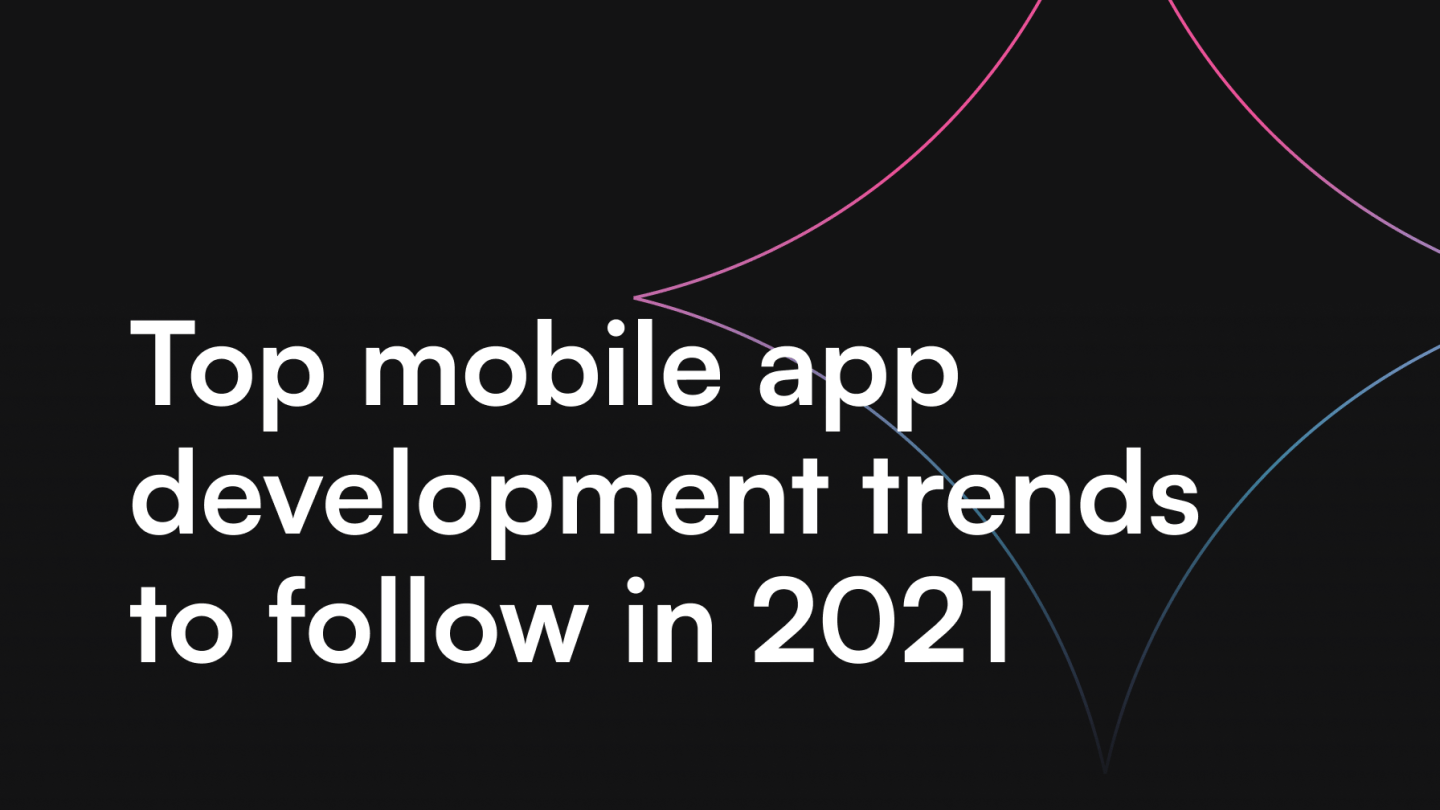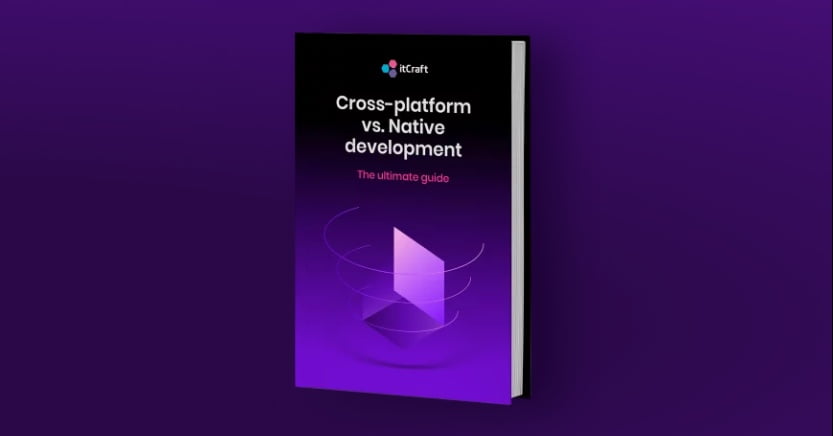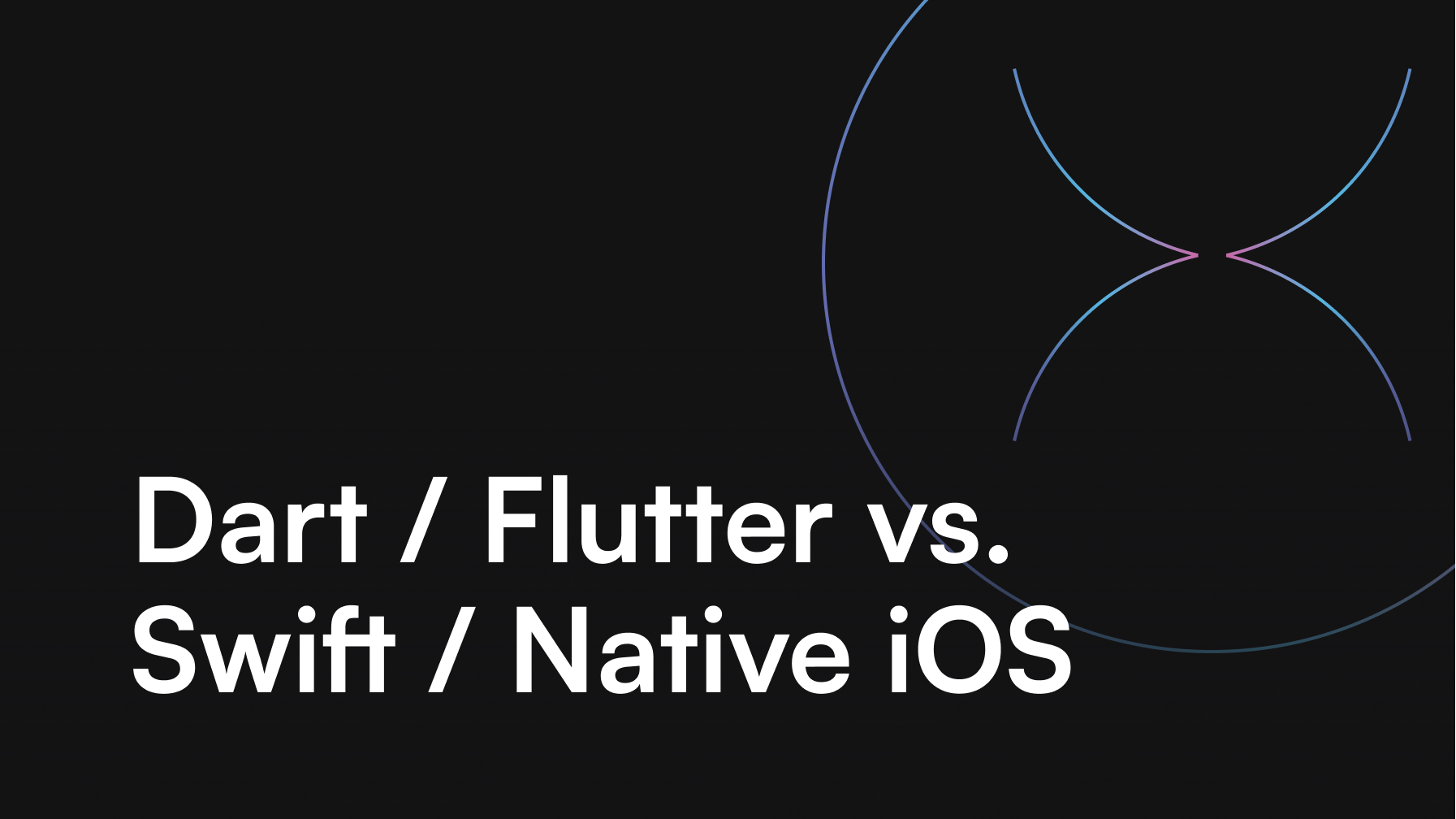Top mobile app development trends to follow in 2021

Paweł

Alexa Trachim

Table of contents
Mobile app development tech stacks are a tricky subject. The range of available solutions, tools as well as the structural complexity of the development process will make your head spin. Talking about design patterns, SDKs, frameworks, libraries and layers will probably put you to sleep in a matter of minutes. Diving too deep into it makes no real sense (until it does, but that’s a whole different story), so instead, we will talk about the top trends in app development.
The best technology for mobile app development
Plenty of options
If your 2021 growth plans include creating a mobile app (as they should, if you don’t have one yet), as soon as you start looking for someone to make it for you, it will turn out there are about as many ways of going about it as there are people to talk to. Freelancers will (most likely) offer quick and simple solutions like PWAs, hybrid, or other browser-based apps. Software houses big and small will present you with options ranging from native iOS and Android, cross-platform Flutter, React Native and a huge number of others.
If we’re talking serious mobile app development – quality, performance and top-of-the-line User Experience, then the real choice is narrowed down (in our opinion) to four options. We are sure there are plenty more possibilities, and we are not saying they won’t do the job, but this piece is about trends, so let’s get straight to it.
Praising native mobile app development is the easy bit, so we’ll leave that for later and start with the biggest hit of recent years – cross-platform development. If an explanation is at all required (in the unlikely event you missed millions of publications about it), cross-platform app development is using one tech stack to produce mobile apps for two (or more) different mobile platforms. In 2021, iOS and Android are the only ones left. Don’t think anyone remembers Blackberry anymore, and Windows Phone is dead.
Flutter
A technology appreciated by developers and clients alike. Google released Flutter in 2017 and its fame has been growing ever since. In less than 2 years, the framework made a lot of noise on the web and outran React Native in online search popularity. On March 3rd, 2021, Google decided to release Flutter 2 that supports web and desktop development. It’s a massive step for this relatively young framework and a new beginning when it comes to cross-platform development.
Flutter is well-known for delivering “beautiful native apps in record time”. In its short history, this framework managed to appeal to some big names. eBay, Alibaba Group, BMW and none other than Tencent – China’s tech giant, to name a few.
Why is Flutter a top choice for 2021?
Mainly it’s delivering on the promises. Its C++ written engine in combination with Google’s Skia library supports low-level rendering. This is where the “beautiful” happens. According to the makers, apps developed with Flutter can consistently render at 120 frames per second. More than enough for smooth interaction with the UI.
Widgets and own language
Flutter, unlike React Native, works with its own libraries and programming language – Dart. Flutter uses Widgets as base UI building blocks, making programmers’ work fairly straightforward. “Everything is a Widget” in the framework. When creating an app, the coders can either utilize elements from a vast library of Widgets or create custom ones with Dart. Introducing a new language in the app development landscape might’ve seemed like a risky move, but it proved to be the right one for Flutter. Dart is reasonably easy to learn and is fully compatible with the framework. Full implementation can be done with just Widgets and Dart.
Official support
The Flutter.dev site is nothing short of amazing. Google’s official support goes above and beyond to deliver thorough information on the latest developments and news, gives a comprehensive and complete introduction to the framework, provides all the necessary tools and solutions for programmers. Flutter also has enormous support from the dev community (in April 2021, it had 118k stars on GitHub). According to Stack Overflow 2020 Developer Survey is the 3rd most loved and 4th most wanted technology among programmers.
React Native
This framework has been around for a while now and is still considered a good choice for cross-platform development. Startups, established brands, and anyone looking to cut the development costs will find something for themselves when using Flutter or React Native. The latter was created by Facebook, so obviously, they would be the first to start using it. Although it doesn’t quite cut it in sustaining the whole platform, the social media giant uses React Native for Instagram and Ads Manager.
Who is it for?
Before Flutter, we could see a huge demand for React Native development. Now it’s decreasing, but it’s still a reliable choice for some businesses. Developers with experience in the field are becoming increasingly harder to find, and most medium and large software houses are turning towards Flutter.
So why would you go with this framework for your application? Does it deliver on the promises?
Anyone with a modest budget, which in mobile app development is anything under 100K, will not pass on a chance to get more bang for their buck. Bigger projects don’t shy away from it either. Uber Eats, Pinterest, Walmart, Discord, and quite a few other big brands utilize React Native. It’s proving to be adequate for their needs.
Chatbots
Application development trends set for 2021 continue on 2020 tendencies. Companies big and small, regardless of industry, are including chatbots in their customer service offer. If you’re strapped for cash and in need of a quality custom automatic chat feature, React Native offers its own react-native-chatbot library – a highly configurable, feature-full solution to enrich user interaction with your brand.
Is cross-platform cheaper than native?
Yes, Flutter and React Native allow developers to write mobile applications for both Android and iOS platforms using just one language. But does it mean you get two or even three apps for the price of one? That’s a firm’ no’. A single codebase is one thing, but implementing an app to a particular platform is quite another.
Bang for your buck
The real advantage here is the fact that you only need one team to build Android and iOS implementations. This translates to savings in project management, faster implementation, less maintenance work and a much quicker path from zero to, e.g., your MVP app. All in all, going with cross-platform frameworks will get the app’s price tag down by around 20% or let you fit in more features within budget. The latter might be a better choice. After all, you do want to give your users the best possible product. The initial craze around the frameworks gave rise to a lot of misconceptions about it, so we recommend reading our ebook about native and cross-platform development to learn more.
Native development
The final two top technologies we want to bring up are iOS and Android native languages. Why split them into two? There are several reasons. Android and iOS hold the duopoly in the mobile systems landscape. Worldwide, Android tops the market with a 71.93% share. Conversely, Apple boasts around 27.07%. While Apple only supports proprietary devices, you will find Android systems in anything from phones to TVs, gym equipment and much more. While iOS offers the best, Android gives you the most. Read on.
iOS native development
If you’re after cutting-edge mobile technology, no compromise innovation and superb quality and performance, iOS has it all. If on top of that, your target market is the U.S., Canada, Australia, then you just can’t miss the opportunities native iOS development provides. Customer satisfaction, top-of-the-line equipment, support and most importantly, users who are happy to pay for all that. These are the reasons for going with native iOS.
Blockchain in iOS apps
If you’re into blockchain and cryptocurrencies, the latest version of Apple’s iOS 14 includes a brand CryptoKit to enable building crypto wallets for mobile apps. A definite must-have if you want to get an edge over the competition, providing an all-purpose crypto payment feature in your app.
Mobile wallet
Another cool feature Apple keeps on improving is their wallet and ID capability. iOS 13 introduced the Core NFC framework, which is a significant improvement from NDEF technology, allowing reading of far more complex NFC tags, thus providing app developers with a tool for creating more feature-rich e-wallet applications.
What else does native iOS offer?
Choosing native technology gives you access to the latest, and when it comes to the latest in iOS, it is no light thing. Each latest iPhone is packed with features asking to be utilized in app development. If you want access to all that and full-on use of native modules, no shortcuts, no compromise, then you won’t think twice. Native development it is.
AI smarts
Since iPhone X, Apple introduced a new AI chip in their top range mobile hardware, opening the pathway for developers to develop apps utilizing Machine Learning. This makes native iOS mobile apps able to “understand” the world around them, recognize contents of photos or videos, and use ML algorithms for augmented reality and a multitude of other features.
Swift
Traditional Objective-C development has been replaced with Swift, an iOS programming language. The technologies, tools and solutions supporting it paved the path for developing state-of-the-art apps for the most demanding users. The possibilities when choosing native iOS implementation are limited only by your mobile device’s capabilities.
If you’re in the business of delivering innovation wrapped in beauty, quality and best-achievable performance, then native iOS is the way to go. If your app is to be the next must-have, most downloaded app – you’re hiring native iOS developers for sure.
Native development is more than just delivering the latest. If you’re playing the long game, going for a big, complex mobile service with a bunch of features for starters and a plan to build a long-lasting, top-notch experience for your users, native is the name of the game.
Android native app development
Android offers something that iOS doesn’t and that’s variety. With iOS native things are relatively simple. Few lines of products, streamlined sizes, fairly similar capabilities, same hardware manufacturer, etc. Now, Android is totally crazy when it comes to devices. You get dozens of manufacturers, various screen sizes and all sorts of onboard hardware – everything supported by one system and basically interoperable.
The former sweet OS
This variety is precisely what makes Android development so attractive. If you’re thinking IoT, home automation, all types of Android portables, cross-device communication, you can’t pick better than Android. Google has been developing its former sweet (Cupcake, Donut, Oreo, Pie…) OS since 2008 and it’s been getting better and better each year. In 2019, things seemed to get a bit more serious with the search giant giving up on sugar in favor of simple and classic Android 10. 2020 followed with Android 11, and in 2021, we can expect the premiere of the new version with number 12 in the name.
Endless possibilities
Creating your Android app natively provides you with the broadest palette of possibilities. With Android SDK, you get complete, low-level access to the device modules – phone’s camera, Bluetooth, microphone and all kinds of other hardware features. This allows implementing complex app functionalities without issues and guarantees that your app will be able to utilize all the latest developments in mobile hardware.
Beacon technology
The wide variety of Android peripheral devices will be especially useful for applications in beacon-based location systems. Suppose you are looking to develop an indoor positioning or mapping infrastructure integrating Bluetooth beacons and mobile devices. In that case, native Android development will quickly transpire as the most cost-effective and issue-free technology.
No technological debt
Apart from the latest innovations in terms of quality, speed and performance, truly native Android apps beat hybrid, cross-platform or PWA software, hands down. With Kotlin – Android’s preferred programming language, you can create applications of the highest achievable standard. Fully working across all types of hardware, regardless of manufacturer, screen resolution and Android version, Kotlin-made applications provide the best possible User Experience. Google offers ongoing and full official support of the Android platform and gives you unlimited possibilities in terms of building the coolest and most feature-rich UIs. Both official and community support, as well as the fact of Android being open source, add to making the platform one of the top choices for 2021.
Top mobile app development trends to follow in 2021
The mobile market is teeming with new solutions, technologies and frameworks. PWA, HTML5 and other hybrid solutions still hold strong positions in the mobile landscape and will be more than applicable for (probably) years to come. We see the emergence of DIY app solutions, codeless tools and other interesting, more or less valuable options. All worth checking out and applicable in certain circumstances. We should also mention new technologies like AI, machine learning and IoT that will be more likely implemented in mobile apps. This trend can’t and shouldn’t be ignored.
If your aim for 2021 is to deliver high (or highest) quality, top performance, beauty, style and top-notch User Experience, then look no further than Flutter for cross-platform apps, Swift for iOS and Kotlin for Android. Satisfaction, yours and that of your users, absolutely guaranteed.

Would you like to know more about differences between cross-platform and native app development? Download our ebook! It is the ultimate guide to Cross-Platform vs Native development. You will find out more about native applications, cross-platform applications and technologies used to build them.
Read more
What Is Software Outsourcing and How Much Does it Cost?
Building mobile UIs – Flutter vs native Android SDK. Language and tech stack applicability and comparison
XCode Templates tutorial – How to create custom template step by step






